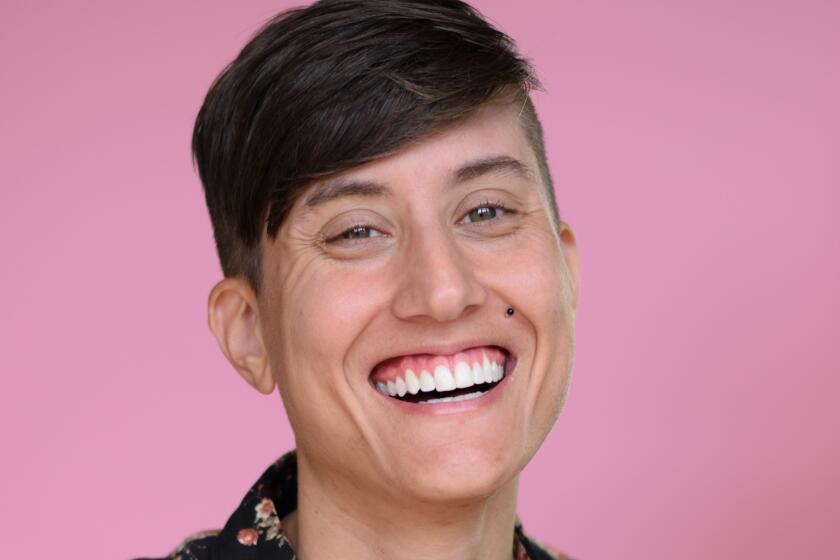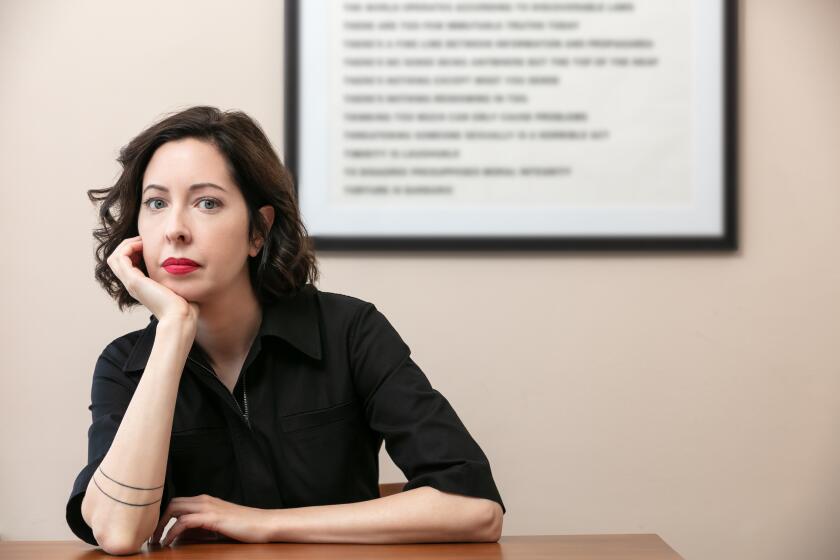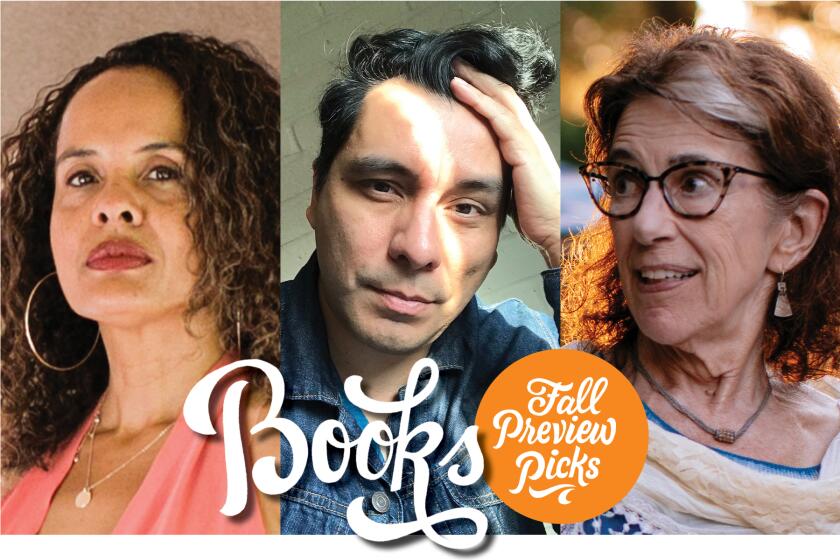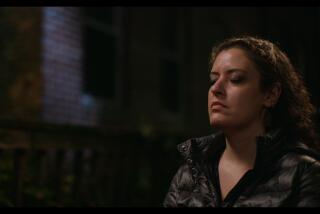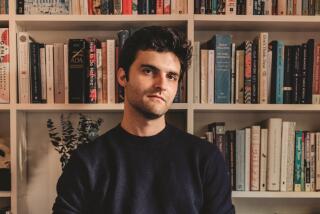To get to the root of mental illness, Rachel Aviv went to the patients

- Share via
On the Shelf
Strangers to Ourselves: Unsettled Minds and the Stories That Make Us
By Rachel Aviv
FSG: 288 pages, $28
If you buy books linked on our site, The Times may earn a commission from Bookshop.org, whose fees support independent bookstores.
For years, Rachel Aviv has explored the fascinating intersection of medicine and criminal justice as a staff writer for the New Yorker. In her first book, “Strangers to Ourselves: Unsettled Minds and the Stories that Make Us,” she turns her curiosity toward a focused study of psychiatric diagnosis, drawing not from the institutions that make these judgments but rather from the patients’ own attempts to put their experiences into language.
Beginning with her own experience in treatment, Aviv then tells the stories of four people: Ray, whose frustration at psychiatry’s failure to solve his issues boils over into a battle between analysis and medication; Bapu, an Indian woman who believes she is a deity while the doctors insist she is schizophrenic; Naomi, who, believing white people are out to kill her, throws her young twin boys off a bridge, killing one; and Laura, a debutante whose struggle to cure her depression made her feel like she was “trapped in the life of a stranger.”
It was obvious from our conversation over the phone from Aviv’s home in Brooklyn — edited below for clarity and length — that she is a compassionate journalist and careful thinker who strongly rejects labels and tidy answers. “Strangers to Ourselves” forces questions about treatment from a humanist mind frame, eliciting compassion not only for these people, but for ourselves.
Devon Price’s ‘Unmasking Autism’ advocates for a radical solution that amounts to common sense: Autistic adults should feel free to be themselves.
How did you go about discovering these stories? Did you already have this book in mind?
I knew I wanted to write a book in 2011, after I had written a story for Harper’s about people in the early stages of psychosis. This was the first time I had confronted the problem of describing the experience of mental illness but feeling that language was inadequate.
What made you decide to open and close the book with your own story?
All the questions I had about psychiatry and mental health had come from my own experience. When I had written the story for the New Yorker about children in Sweden who had been denied refugee status and taken to their beds and stopped eating, it felt similar to my experience when I was 6. [Aviv stopped eating and was treated for anorexia.] And that felt inappropriate, that parallel, and I was thinking ... how does the experience get shaped into its form?
How do you go about gaining permission to use these people’s stories?
I come to them asking if we can have a conversation. Their openness to talking to me is something I’m thinking about. If people don’t want to be written about, that matters. Over time they also might develop their own reasons for wanting to tell their story, recognizing that they have a story to tell. I do want the people I’m writing about to see value in that process.

Most of the subjects had already done their own writing. That must have been a huge help.
The layers of self-reflection, the layers of people representing themselves, in letters versus journals, was truly fascinating. I especially liked having people writing about the experience before anyone else had told them how to interpret it. Bapu’s journals were amazing to see, because even her handwriting would change when she was feeling one with God — versus when she was writing a letter to someone, when she felt like she had been rejected by society.
You say that your first year on antidepressants was the best year of your life. What is your takeaway about medication after writing this book?
Intellectually I find those papers [on how] we don’t know why antidepressants work very compelling. My own experience is that they work and I have to accept the fact that they work. Maybe it’s a placebo effect, but that’s OK, because they still work for me.
My larger answer for medications is that I resist any clean, reductive conclusion. The history of pharmacology is troubling when you read it, but I don’t think the conclusion to draw is to doubt that they can improve people’s lives. We should be skeptical of any expression of the ultimate truth.
Sarah Manguso has earned acclaim for memoirs that cut to the bone. She describes “Very Cold People,” her first novel, as a chance to ponder escape.
It seems to me this is the real crux of the book — that understanding our mental health comes down to a combination of factors, chemical and social. Particularly in the case of Naomi, whose mother said: “Oppressed/depressed: either way, you can’t feel good about yourself.” Are we sick or is it society that’s sick?
I don’t want to get into the space of being antipsychiatry — that take is simplifying. A better way of thinking of it is to ask: How do my struggles intersect with society’s inability to respond to them?
I was shocked by the statistic you quote in the book: “For people of color, the risk of psychosis rises the whiter their community is.”
Delusions are often seen as the result of an ill brain. But Naomi’s delusions didn’t just come out of nowhere. To tell her, “No, white people aren’t looking at you like that” — but perhaps they are; the seed of that is real. Telling her she’s sick while maybe it’s true makes her feel even worse because she isn’t being heard.
Which story was the most challenging to write?
The writing process for the Ray chapter was the most challenging. I usually write about people I admire, and I really struggled with his personality. I shared it with a workshop and I remember this professor asked, “Why did you subject me to him?!” I had to write it in such a way so that wasn’t the experience of the reader.
What did you learn in writing this book that you hope to pass on?
There is this dream of silver bullets in psychiatry and medicine. But many explanations can coexist at the same time. We think when we receive a diagnosis that it’s describing something that has already occurred, but a diagnosis acts on us. It’s not neutral. If an explanation contradicts the sense of who a person is, it can be damaging. There should be more attention paid to the way people describe their own distress.
Also, loneliness is such a huge part of mental illness: the loneliness of not being able to communicate about it or having someone who understands. I was struck by how a community response contributed to someone’s deterioration or recovery. It seems so basic, but it’s huge.
The latest from Ling Ma, Yiyun Li, Russell Banks and Namwali Serpell as well as exciting newcomers round out our critics’ most anticipated fall books.
Ferri’s most recent book is “Silent Cities: New York.”
More to Read
Sign up for our Book Club newsletter
Get the latest news, events and more from the Los Angeles Times Book Club, and help us get L.A. reading and talking.
You may occasionally receive promotional content from the Los Angeles Times.
